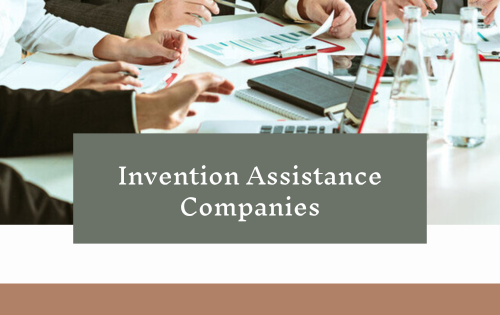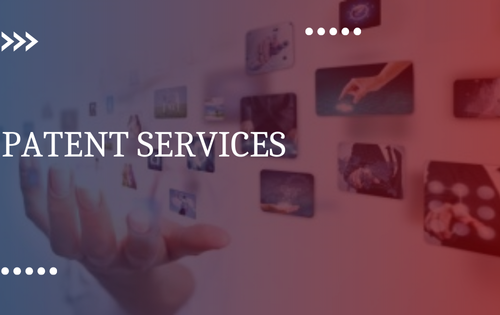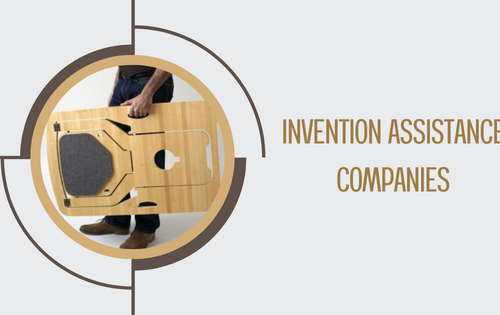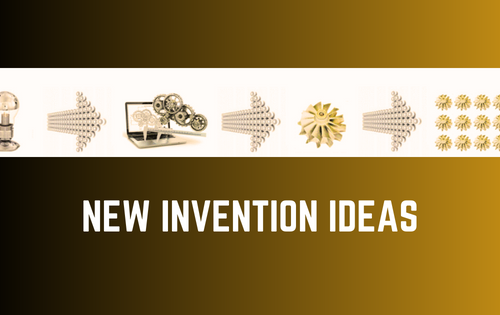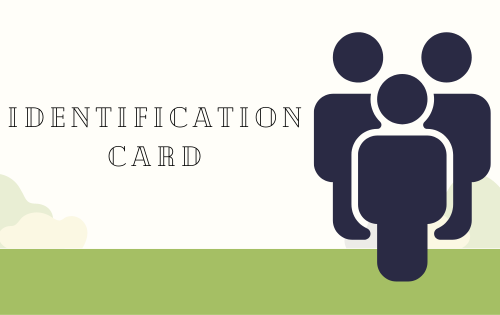Law
The Importance of Patent Search
A crucial step in the process of obtaining a patent for your invention is conducting a thorough patent search. A patent search plays a vital role in assessing the novelty and inventiveness of your invention idea and determining whether it meets the criteria for patentability. Partnering with a reputable invention company like InventHelp invention company can help you conduct a patent search and determine whether your invention is eligible for patent protection.
What Is a Patent Search?
A patent search is a comprehensive examination of existing patents, publications, and other forms of prior art to determine if an invention idea is novel and non-obvious. The primary objective of a patent search is to identify any prior inventions or technologies that are similar to the one you are seeking to patent. By conducting a patent search, inventors can assess the likelihood of their invention being granted a patent and whether any conflicting patents may pose obstacles to obtaining patent protection.
Significance of Patent Search
Conducting a patent search is a crucial initial step in the patenting process. By uncovering existing patents and publications relevant to your invention idea, you can assess the novelty and inventiveness of your concept. A thorough patent search can help you avoid investing time and resources in pursuing a patent for an invention that may not be patentable due to prior art. Additionally, a patent search can assist you in drafting a stronger patent application by highlighting areas where your invention distinguishes itself from existing technologies.

Benefits of Partnering with InventHelp for Patent Search
InventHelp, a leading invention company with a proven track record of assisting inventors in navigating the patent process, offers professional patent search services to help inventors assess the patentability of their invention ideas. By partnering with InventHelp for your patent search needs, you can benefit from the expertise of their experienced patent research team. InventHelp’s patent search professionals are skilled in conducting comprehensive searches of existing patents and databases to uncover relevant prior art that may impact the patentability of your invention.
Types of Patent Searches Offered by InventHelp
InventHelp inventor services offer a range of patent search services tailored to meet the specific needs of inventors at different stages of the patenting process. These services include:
- Novelty Searches: Identifying prior art that may affect the novelty of your invention idea.
- Clearance Searches: Assessing the freedom to operate of your invention by identifying existing patents that may pose infringement risks.
- Patentability Searches: Determining the patentability of your invention by assessing its novelty, inventiveness, and commercial viability.
- Competitor Patent Analysis: Analyzing patents held by competitors to identify potential areas of differentiation or improvement for your invention.
Conclusion
In conclusion, conducting a patent search is a critical step in the patenting process that can help inventors evaluate the patentability of their invention ideas and make informed decisions about pursuing patent protection. By partnering with a reputable invention company like InventHelp for your patent search needs, you can leverage the expertise of professionals in conducting thorough searches and identifying relevant prior art. With the support of InventHelp’s patent search services, inventors can navigate the patenting process more effectively and increase their chances of securing intellectual property rights for their innovative creations.
The Significance of Consulting with Invention Assistance Companies like InventHelp
In the world of innovation and entrepreneurship, coming up with a groundbreaking idea or invention is just the first step in a long journey towards success. Many aspiring inventors often struggle with navigating the intricacies of the invention process, from conceptualization to commercialization. This is where consulting with invention assistance companies like InventHelp can play a crucial role in turning your idea into a successful product.
Why Seek Guidance from Invention Assistance Companies?
One of the primary reasons why seeking guidance from companies like InventHelp is essential is the expertise and experience they bring to the table. These companies are staffed with professionals who understand the complexities of the invention process and can provide valuable insights and guidance at every stage of development. From conducting market research to creating prototypes and navigating the patenting process, InventHelp offers a comprehensive suite of services to help inventors bring their ideas to life.
Additionally, working with a reputable invention assistance company can help inventors avoid common pitfalls and mistakes that can derail their efforts. By leveraging the knowledge and resources of a company like InventHelp, inventors can streamline the invention process and increase their chances of success. From evaluating the market potential of an idea to developing a solid business plan, these companies can offer invaluable support to inventors looking to turn their dreams into reality.
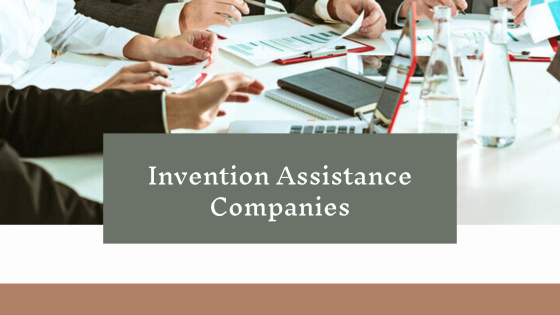
Licensing your Invention with InventHelp
One of the key services offered by InventHelp is helping inventors license their inventions to companies or manufacturers interested in bringing the product to market. Licensing can be a powerful strategy for inventors who may not have the resources or expertise to manufacture and distribute their products independently. When you decide to license your Invention with InventHelp, you can access a network of potential licensees and negotiate favorable agreements that can help you earn royalties and take your inventions to the next level.
Licensing your invention with InventHelp involves a strategic approach that includes market evaluation, patent protection, and negotiation with potential partners. InventHelp’s team of licensing experts can help inventors identify the right companies to approach, craft an attractive licensing proposal, and secure a mutually beneficial agreement that protects the inventor’s interests. By leveraging InventHelp’s industry connections and expertise, inventors can increase their chances of securing a lucrative licensing deal that can propel their inventions to commercial success.
Conclusion
In conclusion, consulting with invention assistance companies like InventHelp can be a game-changer for inventors looking to bring their ideas to fruition as you can see from InventHelp Customer Reviews & Testimonials video. From providing expert guidance and support to helping inventors license their inventions, companies like InventHelp offer a range of services designed to help inventors navigate the complexities of the invention process. By partnering with a reputable and experienced company like InventHelp, inventors can access the resources and knowledge they need to turn their visions into successful products. So, if you have a brilliant idea that you believe has the potential to disrupt the market, consider seeking the assistance of InventHelp to turn your invention dreams into a reality.
How InventHelp Helps New Inventors Secure Patents
Invention is a thrilling journey that begins with a spark of creativity and culminates in the creation of something novel and impactful. For new inventors, navigating the complex landscape of intellectual property rights and securing patents can be a daunting task. However, with the guidance and expertise of a trusted partner like InventHelp, new inventors can confidently protect their ideas and innovations, paving the way towards success in the competitive world of invention.
The Importance of Securing Patents for New Inventors
Securing a patent is a crucial step in the invention process, as it grants inventors the exclusive rights to their inventions for a set period of time. A patent not only protects the inventor’s intellectual property from unauthorized use and infringement but also provides a competitive advantage in the market. With a patent in hand, inventors can confidently showcase their innovations to potential investors, manufacturers, and licensing partners, knowing that their ideas are legally protected.
The Challenges Faced by New Inventors
For new inventors, the process of securing a patent can be filled with challenges and complexities. Understanding the intricate requirements of patent law, conducting a comprehensive patent search, and preparing a robust patent application require specialized knowledge and expertise. Many new inventors may feel overwhelmed by the legal and technical aspects of the patenting process, leading to delays, rejections, and potential risks to their intellectual property.
How Does InventHelp Assist with Patenting? InventHelp offers a comprehensive range of patent services designed to assist new inventors in every step of the patenting journey. From conducting thorough patent searches to drafting and filing patent applications, the company’s skilled patent professionals guide inventors through the intricate process of securing a patent. With a keen eye for detail and a deep understanding of patent law, InventHelp ensures that new inventors’ ideas are protected and positioned for success.
InventHelp: A Trusted Ally for New Inventors
Founded in 1984, InventHelp has been a pioneering force in the invention industry, providing guidance and support to inventors of all backgrounds and expertise levels. With over three decades of experience, the company has established itself as a trusted ally for new inventors seeking to secure patents for their innovative ideas. InventHelp’s team of experienced patent attorneys and agents are well-versed in intellectual property law and provide invaluable assistance in navigating the patenting process.

Comprehensive Patent Services Offered by InventHelp
InventHelp offers a comprehensive range of patent services designed to assist new inventors in every step of the patenting journey. From conducting thorough patent searches to drafting and filing patent applications, the company’s skilled patent professionals guide inventors through the intricate process of securing a patent. With a keen eye for detail and a deep understanding of patent law, InventHelp ensures that new inventors’ ideas are protected and positioned for success.
Tailored Guidance and Support
One of the key advantages of working with InventHelp is the personalized guidance and support that new inventors receive throughout the patenting process. The company’s patent professionals take the time to understand each inventor’s unique ideas and goals, crafting tailored strategies to secure patents that align with their vision. By providing clear and concise explanations of the patenting process, InventHelp empowers new inventors to make informed decisions and overcome any obstacles they may encounter.
Leveraging Technology for Efficient Patenting
In addition to its legal expertise, InventHelp leverages state-of-the-art technology and resources to streamline the patenting process for new inventors. Through innovative tools and software, the company facilitates efficient communication, collaboration, and document management, ensuring that patent applications are prepared and filed accurately and promptly. This integration of technology enhances the patenting experience for new inventors, making the process more accessible and transparent.
Building a Strong Foundation for Success
By guiding new inventors towards securing patents, Invent Help helps them build a strong foundation for success in the competitive world of invention. With their ideas protected by patents, inventors can confidently pursue opportunities for commercialization, licensing, and partnerships, knowing that their intellectual property is safeguarded. Through its unwavering commitment to supporting innovation and creativity, InventHelp empowers new inventors to bring their ideas to life and make a meaningful impact in the industry.
In Conclusion
Securing a patent is a critical milestone for new inventors, and with the guidance and expertise of InventHelp, the process becomes more manageable and rewarding. By providing comprehensive patent services, tailored guidance, and leveraging technology, InventHelp assists new inventors in protecting their ideas and navigating the complexities of patent law. With InventHelp by their side, new inventors can confidently pursue their inventive endeavors, knowing that their innovations are in trusted hands.
How to Turn Your Invention Idea into a Marketable Product
Turning an invention idea into a marketable product is a journey that requires a blend of creativity, diligence, and strategic planning. Many inventors encounter various challenges along the way, from ensuring their idea is original to navigating the complexities of patenting and marketing. Companies like InventHelp can be invaluable partners in this process, offering a range of services designed to transform promising concepts into commercially viable products. Here’s a step-by-step guide on how to bring your invention to market.
Conceptualization and Ideation
The first step is to develop a clear and detailed understanding of your invention. Document your idea thoroughly, including sketches, descriptions, and any functionalities that make your invention unique. This will serve as the foundation for every subsequent step.
Questions to Consider:
- What problem does your invention solve?
- How does it differ from existing solutions?
- Who is your target audience?
Research and Feasibility Analysis
Before investing significant time and resources, it’s crucial to conduct a feasibility analysis. This involves researching the market to ensure there’s a demand for your invention and examining the competition to identify any similar products.
Key Steps:
- Conduct a patent search to ensure your idea is novel. InventHelp can assist in performing detailed patent searches to identify existing patents that might conflict with your idea.
- Analyze market trends and potential competitors.
- Should I Use InventHelp To Get Started With My Invention Idea? This is a common question among inventors, and given the complexities involved, partnering with a company that has expertise and established processes can provide much-needed guidance and support.
Prototyping
Creating a prototype is essential for visualizing and testing your invention. A prototype can help you refine your design, identify potential issues, and provide a tangible model to present to potential investors or partners.
Considerations:
- Choose the right materials and methods for your prototype.
- Collaborate with engineers or product designers if necessary. InventHelp connects inventors with professionals who can help develop functional prototypes.
Patent Protection
Protecting your intellectual property through patents is a critical step in safeguarding your invention from being copied. A strong patent provides legal protection and can enhance the commercial value of your product.
Steps Involved:
- Draft your patent application meticulously, ensuring all details are covered.
- Work with patent attorneys or agents to navigate the intricacies of the patenting process. InventHelp can provide access to experienced legal professionals who specialize in intellectual property law.
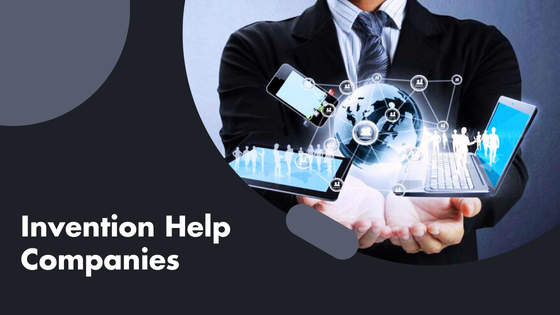
Marketability Assessment
Understanding the commercial potential of your invention is vital. Marketability assessments help evaluate how well your product will perform in the marketplace and identify any adjustments needed to appeal to consumers.
Assessment Components:
- Market trends analysis
- Consumer behavior studies
- Competitive landscape evaluation
InventHelp offers marketability assessments to help inventors make informed decisions about moving forward with commercialization.
Manufacturing and Production
Once your invention is patented and you’ve validated its market potential, the next step is manufacturing. Choose a production method that balances cost, quality, and scalability.
Factors to Consider:
- Selection of reliable manufacturers
- Production cost estimates
- Quality control measures
Marketing and Licensing
With your product ready for the market, you need a robust marketing strategy to reach your target audience. This may involve online marketing, trade shows, and direct sales efforts.
Marketing Strategies:
- Develop compelling branding and packaging.
- Leverage social media and online advertising.
- Create marketing materials, such as brochures and videos.
InventHelp assists inventors in developing marketing strategies and materials, as well as facilitating connections with potential licensees, manufacturers, and distributors through their extensive network.
Launch and Sales
The final step is launching your product to the market. This stage involves executing your marketing plan, establishing sales channels, and continually collecting feedback to improve your product.
Launch Tips:
- Use a multi-channel approach to maximize reach.
- Organize a product launch event or webinar.
- Monitor sales performance and customer feedback for ongoing improvements.
Conclusion
Turning your new invention idea into a marketable product is a multifaceted process that demands a combination of creativity, strategic planning, and execution. Partnering with a company like InventHelp can provide invaluable assistance at every stage, from patent searches and legal support to prototyping, market assessments, and marketing strategies. By leveraging these resources, inventors can turn their innovative ideas into successful, marketable products that address consumer needs and make a tangible impact in their respective industries.
The Role of Patent Referral Services in Protecting Your Invention
In the bustling world of innovation, the journey from a simple idea to a fully-protected invention can be complex and fraught with challenges. One of the most vital elements of this journey is safeguarding your intellectual property through patents. However, navigating the intricate and often overwhelming patenting process requires specialized knowledge and expertise. This is where patent referral services, such as those provided by InventHelp, come into play, acting as a bridge between inventors and the labyrinthine world of patent law.
Navigating Complex Legalities
The U.S. Patent and Trademark Office (USPTO) alone receives hundreds of thousands of patent applications every year, making the patenting process a highly competitive and meticulous endeavor. Patent laws are intricate and require a deep understanding to ensure that an invention is not only new and non-obvious but also fully compliant with legal standards.
Patent referral services like InventHelp are staffed with experts who possess an in-depth understanding of patent law. They assist inventors by providing essential legal guidance, ensuring that all documentation and claims are correctly filed and adhered to. This guidance is crucial, as even a minor error in the application process can lead to delays or outright rejection of the patent as explained in https://tucson.com/brandavestudios/top-tips-to-get-patent-referral-services-for-your-invention-idea-inventhelp/article_5d0bf794-ad6c-5495-8296-0606206a3891.html article.
Ensuring Compliance
Compliance with patent laws and regulations is another significant hurdle for inventors. The patenting process involves numerous stages, including prior art searches, preparing and drafting patent applications, and responding to any objections raised by the patent office. Each of these stages demands meticulous attention to detail and strict adherence to legal standards.
Patent referral services such as InventHelp streamline this process by ensuring that each step is handled accurately and efficiently. They conduct thorough prior art searches to determine the uniqueness of the invention and draft comprehensive patent applications that clearly define the scope and claims. Moreover, they help respond to office actions from patent examiners, addressing any questions or issues that may arise during the review process.

Connecting with Expert Patent Attorneys
One of the most invaluable aspects of patent referral services is their ability to connect inventors with expert patent attorneys. Patent attorneys possess specialized knowledge and skills that are indispensable for successfully navigating the patenting process. They not only draft and file patent applications but also represent inventors in proceedings before the USPTO, ensuring their intellectual property rights are vigorously defended.
Services like InventHelp maintain extensive networks of experienced patent attorneys who are well-versed in various fields of technology and innovation. By leveraging these networks, inventors can find the right attorney who possesses the relevant expertise to protect their invention comprehensively. This tailored approach significantly enhances the chances of obtaining a patent, as the right attorney can effectively navigate the nuances of patent law and anticipate potential hurdles.
Additional Support and Resources
Beyond connecting inventors with patent attorneys, InventHelp offers a myriad of additional services designed to support inventors throughout their journey. These include prototype development, which helps bring the invention to life, and market analysis, which provides valuable insights into the potential commercial success of the invention.
By offering such comprehensive support, InventHelp ensures that inventors are well-equipped not only to secure patents but also to bring their inventions to market. This holistic approach can be particularly beneficial for first-time inventors who may need guidance across multiple areas of the innovation process.
Conclusion
In the competitive world of innovation, protecting your invention through patents is non-negotiable. The patenting process, however, is notoriously complex and requires an understanding of intricate legalities, strict compliance, and expert representation. Patent referral services such as those provided by InventHelp play a critical role in bridging the gap between inventors and the patenting world. By providing essential legal guidance, ensuring compliance, and connecting inventors with expert patent attorneys, these services significantly enhance the chances of successfully obtaining a patent.
In essence, patent referral services act as valuable allies for inventors, guiding them through the maze of patent law and ensuring their intellectual property is effectively safeguarded. Whether you are a seasoned innovator or a first-time inventor, leveraging the expertise of patent referral services, such as those provided by InventHelp, can make the difference between an idea that remains unprotected and one that enjoys the full protection of a patent.
What Is Patent Search?
A patent search is an indispensable procedural step that every inventor should undertake before attempting to file a patent application. This comprehensive examination of issued patents and published patent applications serves a dual purpose. Primarily, it informs whether an invention is novel and, therefore, patentable. Additionally, it helps in averting the pitfalls of potential infringement on existing patents, which could lead to costly legal repercussions. Services such as InventHelp offer invaluable assistance in conducting thorough patent searches, setting the stage for a well-informed and strategic patent application process.
Understanding the Importance of a Patent Search
Embarking on the journey of patenting an invention without first conducting a patent search is akin to navigating uncharted waters without a map. The landscape of existing patents is vast and complex, spanning millions of documents that may include crucial data relevant to the novelty of your invention. A patent search sifts through these documents to uncover any prior art that closely mirrors the proposed invention. Prior art is any evidence that your invention is already known and could include anything from earlier patents to publications and existing products.
The outcomes of a patent search are critical: they either confirm the novelty of the invention, adding confidence to the patent application, or they unveil similar inventions, thereby signaling the need to adjust the innovation.
The Components of a Patent Search
A thorough patent search delves into various databases, including those managed by national and international patent offices, scientific journals, and other publications. This exploration goes beyond just matching keywords; it involves a nuanced understanding of the technology or product in question, requiring an analytical review of patent claims, descriptions, and drawings. The components of a patent search might include:
- Existing Patents: Focusing on patented inventions that might be similar to the invention being considered for a patent.
- Published Patent Applications: Examining applications that are still in the review process but have been made public.
- Non-Patent Literature: Identifying relevant scientific papers, journal articles, and other publications that could impact the novelty of the invention.

The Role of InventHelp in Conducting Patent Searches
InventHelp provides a critical service by offering to conduct patent searches for inventors. Given the complexity and specificity required in a thorough search, having experienced professionals like those at InventHelp can make a significant difference. They are equipped with the knowledge of where to look, what to look for, and how to interpret the findings. Moreover, InventHelp can provide guidance on the next steps, whether it means proceeding with a patent application, making necessary adjustments to the invention, or perhaps, reconsidering the decision to file for a patent based on the search outcomes.
How About A Prototype?
InventHelp can also help you create an invention prototype model. This is especially useful if you are looking to license or sell your idea, as it will give potential buyers an idea of what they are getting into. A prototype can be made from many different materials, including wood, plastic and metal. It can be as simple as a model that shows how the invention works or as complex as a working model that demonstrates its functionality.
Conclusion
A patent search is not simply a procedural checkbox in the patent application process, it is a strategic tool that informs and shapes the journey of an invention from concept to protected intellectual property. By revealing the landscape of existing patents and published information, a patent search conducted by competent entities like InventHelp lays the groundwork for successful patent applications. It ensures that inventors can proceed with confidence, armed with the knowledge necessary to secure their inventions’ uniqueness and navigates the complex domain of intellectual property with greater precision and preparation.
Navigating the Invention Process
Innovators and creators often face substantial hurdles in bringing their groundbreaking ideas to fruition. This is where invention assistance services come into play — offering crucial support to inventors eager to protect and advance their ideas. InventHelp, a prominent player in the industry, exemplifies the kind of assistance inventors can tap into to navigate the complexities of the invention process.
What are Invention Assistance Services?
Invention assistance services are companies that specialize in supporting inventors through the stages of product development, patenting, marketing, manufacturing, and licensing. What Is InventHelp? Renowned for its extensive experience, InventHelp provides a suite of services to help inventors along this journey.
How InventHelp and Similar Services Contribute to the Process
Patent Assistance: Recognizing the legal intricacies of intellectual property, InventHelp offers resources to guide inventors through conducting patent searches and aligning with a patent attorney to assist in filing and protecting an idea.
Prototype Development: InventHelp connects inventors with resources to build prototypes, which serve as the first tangible rendition of their concept and a step towards refining the final product.
Marketing Support: With adept marketing strategies and a vast network, InventHelp helps inventors identify their target market and strategize the best way to present their invention.
Licensing Representation: InventHelp can facilitate connections with businesses interested in licensing an invention, ensuring that inventors find the right partners for their products.
Investor Matching: Recognizing the importance of funding, InventHelp can offer support in seeking investment opportunities, preparing inventors to meet with potential backers effectively.

The Benefits of Partnering with InventHelp
Professional Expertise: InventHelp Invention Services brings together industry-specific experts providing a wealth of knowledge that simplifies and enriches the invention cycle.
Avoiding Pitfalls: InventHelp can help inventors steer clear of common errors, from legal issues to missteps in marketing or manufacturing planning.
Access to Essential Resources: Many independent inventors struggle to access the resources needed to bring their invention to market. InventHelp’s network can open doors to these essential services.
Considerations When Working with InventHelp
Understanding Costs: InventHelp, like many other invention services, charges for its services. Inventors should weigh these costs against potential benefits and have a clear understanding at the outset.
Do Your Research: Given the variation in service quality within the industry, it’s crucial for inventors to thoroughly vet any potential partner. When considering InventHelp, look for client testimonials, success stories, and a transparent business model.
Maintaining Engagement: While InventHelp can provide significant aid, inventors should stay actively involved to keep the essence of their vision at the forefront.
Choosing InventHelp or Another Service
Before securing the services of InventHelp or any similar company, inventors should:
- Look for genuine reviews and success rates from other inventors who have used their services.
- Carefully discuss and understand all associated fees and what specific services they cover.
- Make fully informed decisions and retain personal oversight of the process.
Conclusion
Invention assistance services like InventHelp present remarkable resources for inventors looking to make their mark in their respective industries. By offering support from conception through potential commercial success, InventHelp can play a pivotal role in an inventor’s journey. Thorough research and a clear understanding of the services on offer are key to ensuring a fruitful relationship with any invention assistance service. With the right support, an inventive idea has a far greater chance of becoming a marketable and potentially life-changing product.
How Tech Innovations Are Aiding in Fake ID Detection
The advent of technology has brought us a double-edged sword. On one side, advancements have made counterfeiting identification (ID) cards more intricate, but on the flip side, they’ve also facilitated detection mechanisms against these fake IDs.
Integrated Security Features
Advancements in the micro-printing technology have allowed for the inclusion of minute details on ID cards that are incredibly hard to replicate. Moreover, unique features like Optically Variable Devices (OVDs) — holograms or color-changing ink — that shift appearance based on the angle of view, are effectively integrated. Such features are complicated and expensive to reproduce, making them a significant hurdle for counterfeiters.
Magnetic Stripes and Barcodes
IDs now carry encoded data on magnetic stripes or barcodes. While this may seem basic, their implementation has greatly assisted in detecting counterfeit cards. IDs are checked using scanning devices which read this encoded data. Any discrepancies or inconsistent information between the printed and scanned data immediately flag a fake ID.
RFID Technology
Radio Frequency Identification (RFID) chips are becoming exceptionally common in modern IDs. They store personal identification details securely and are easily read by specialized scanners. Counterfeiters would need sophisticated equipment to clone these RFID chips, which is a considerable obstacle. The absence of an RFID chip or the inability to read it using a scanner is a tell-tale sign of a fake ID.

UV and Infrared Lights
UV and infrared light features have been included in newer ID card designs. Invisible to the naked eye, these features will glow under UV or infrared light, providing a non-manipulatable layer of security that can be quickly verified by a detector.
AI and Machine Learning
The dawn of artificial intelligence (AI) and machine learning has automated the complex task of spotting fake IDs. These technologies can analyze distinct characteristics of real IDs and can detect minor anomalies that are often missed by the human eye. With AI, authorities or establishments can skim through a vast volume of identification cards in no time and with a high degree of accuracy.
Biometrics Integration
Biometrics, like fingerprint or facial recognition, are swiftly making their way onto ID cards. With biometrics, the identification process is no longer dependent solely on visual verification but includes biological proof that is exceedingly difficult to forge.
Since it is very easy to find fake ID sites by for example typing “Best website to buy fake id” into a search engine, the use of biometrics is becoming more and more common. Many countries are starting to integrate this technology into their ID cards in order to make them more secure.
In Summary
Technology has indeed shaped the face of identification cards and the means to verify them. Counterfeiters might have adapted to advancements, but the fight against fake IDs is far from being lost, with new innovations promising a higher level of security credibility. The pursuit of technology in enhancing security features and detection mechanisms is an ongoing endeavor, ensuring that the cunning craft of counterfeiters is met with an equal or more formidable force.
The Process of Developing A New Product Idea
Developing a new product idea is an exciting journey – but it can also be complicated and overwhelming. Let’s break down the steps of bringing your idea to life, from conception to market-ready product.
Research
Before you can even begin to develop your new product idea, you need to do your research. This involves looking into the current market and seeing what gaps you can fill with your product. You should also determine who your target audience is and what your product’s unique selling points are.
Refine
Once you’ve done your research, it’s time to refine your new product idea. This means taking the time to think through all the details and develop a clear plan for how you want your product to look, function, and be sold. You should also consider the resources you need to bring your idea to life.
Prototype
The next step is to create a prototype of your product. This is where you can really start to bring your idea to life and test it out. Prototyping can be done through various methods, depending on the type of product you’re creating. For example, you may need to 3D print a model or use virtual reality to create a virtual prototype.

Test
Once you’ve created a prototype, it’s time to test it out. This means gathering feedback from potential customers to see how they react to your product. This will help you refine your idea and make any changes that need to be made before it’s ready to go to market.
Launch
Finally, it’s time to launch your new product! This will involve putting together a marketing campaign, developing a sales strategy, and getting your product out into the world. With hard work and dedication, you can bring your new product idea to life.
Get Help From Professionals
If you need help with any part of the process, it’s a good idea to reach out to professionals. InventHelp invention company is a great place to start. They can give you advice on what types of products are likely to be successful, as well as provide support throughout the process. Additionally, they will connect you with companies that accept invention ideas and help you get your product patented. If you want to bring your idea to life, it’s worth speaking with a company like InventHelp.
Conclusion
Bringing your new product idea to life is not an easy task. You’ll need to spend a lot of time and effort on it, but the rewards can be worth it. If you want to make money from your invention, it’s important that you have the right support in place.
What Is The Difference Between Fake IDs and Real IDs?
Fake IDs and Real IDs are two important documents used for identification purposes. Fake IDs are usually created for the purpose of misrepresenting a person’s identity or age, while Real IDs are issued by governments and are used for legal identification.
Difference Between Fake IDs and Real IDs
The main difference between fake ID vs real ID is that fake IDs are not issued by a government and do not have any legal standing, whereas real IDs are issued by governments and are legally recognized for identification and other purposes. Fake IDs can be obtained from various sources, but they are not legally recognized and are not valid for any official purposes. Real IDs, on the other hand, are issued and recognized by governments and are valid for official purposes.

Advantages of Fake IDs
Fake IDs can be useful for underage individuals who need to gain access to places that are restricted to those over the legal age. Fake IDs can also be used to get around other restrictions, such as purchasing alcohol or entering clubs. Additionally, fake IDs are relatively easy to obtain, and can be obtained from various sources.
Advantages of Real IDs
Real IDs are issued and recognized by governments, meaning they can be used for official purposes such as obtaining a driver’s license or registering to vote. Additionally, real IDs are more secure than fake IDs and are harder to counterfeit. Real IDs also have more features than fake IDs, such as a barcode or magnetic strip which can be used to store additional information.
Conclusion
In conclusion, Fake IDs and Real IDs are two important documents used for different purposes. Fake IDs are not recognized by governments and are usually created for the purpose of misrepresenting a person’s identity or age. Real IDs, on the other hand, are issued and recognized by governments and are valid for official purposes. Both Fake IDs and Real IDs have their advantages and disadvantages, and it is important to understand the differences between them before making a decision on which one to use.

